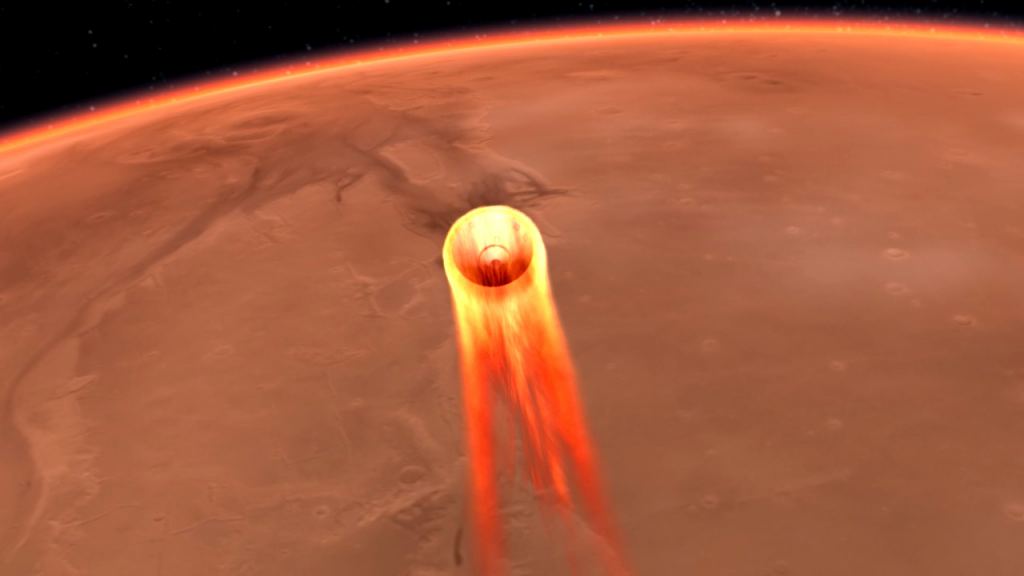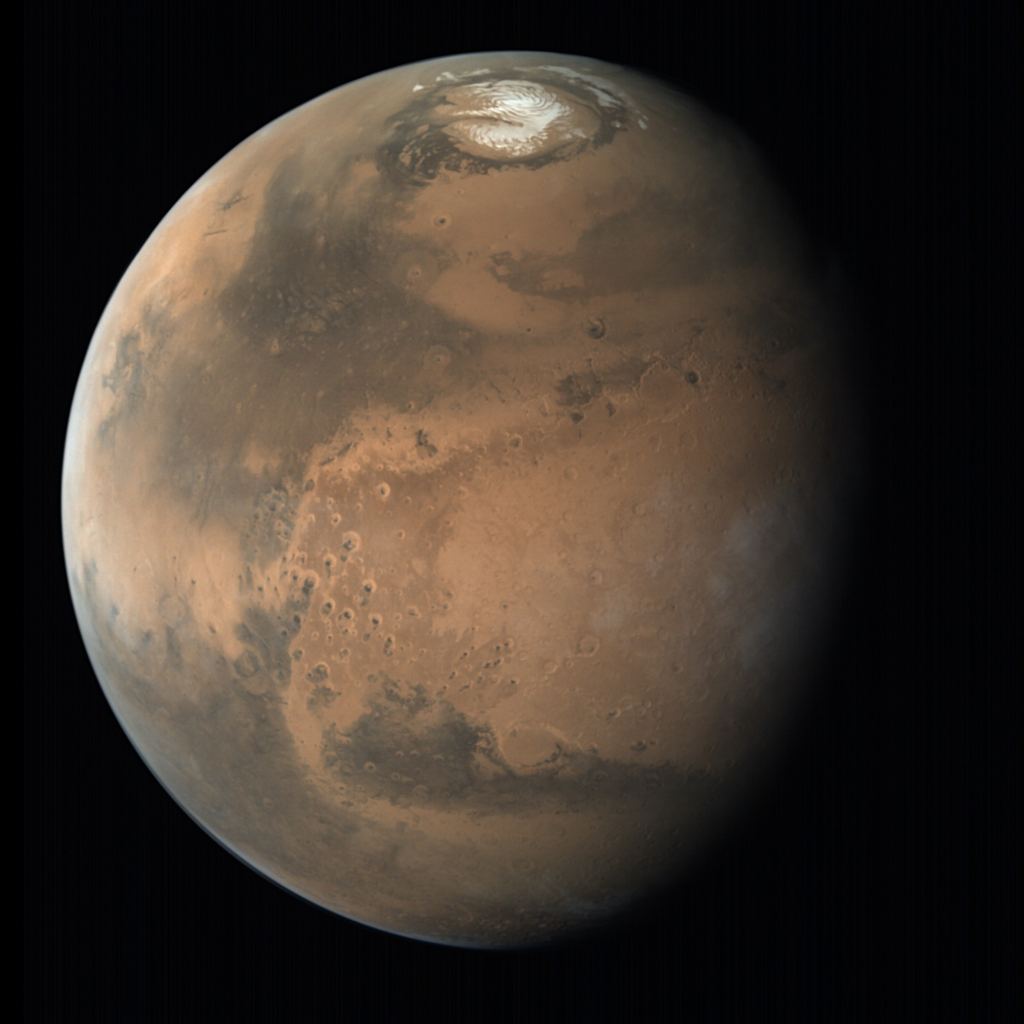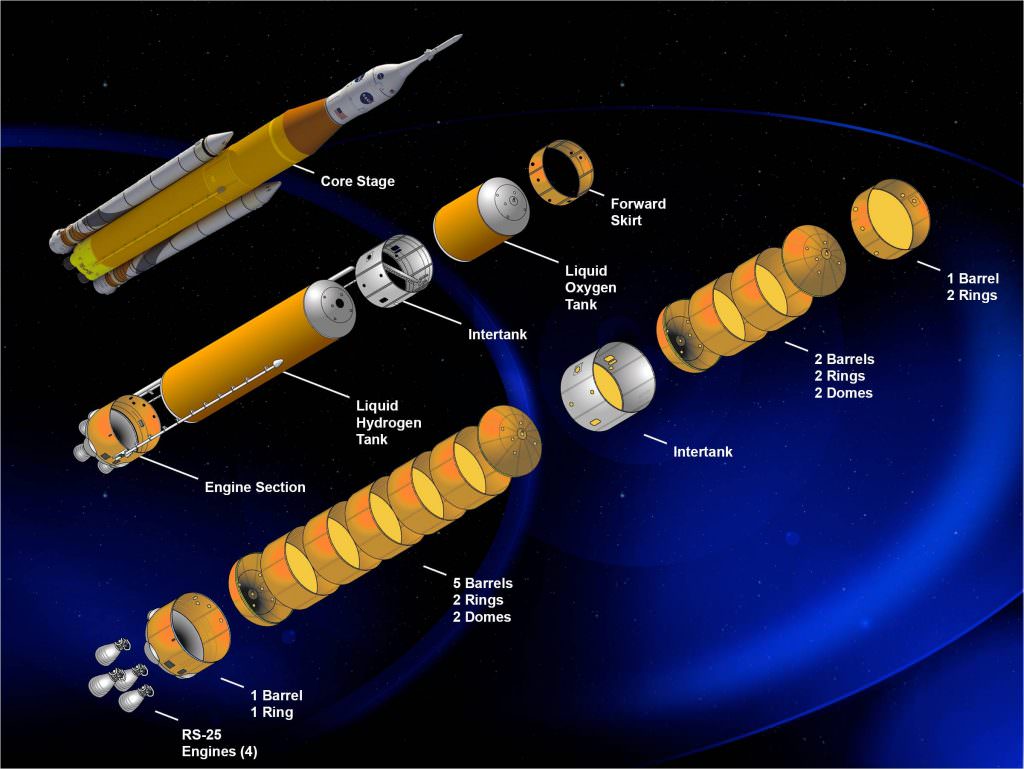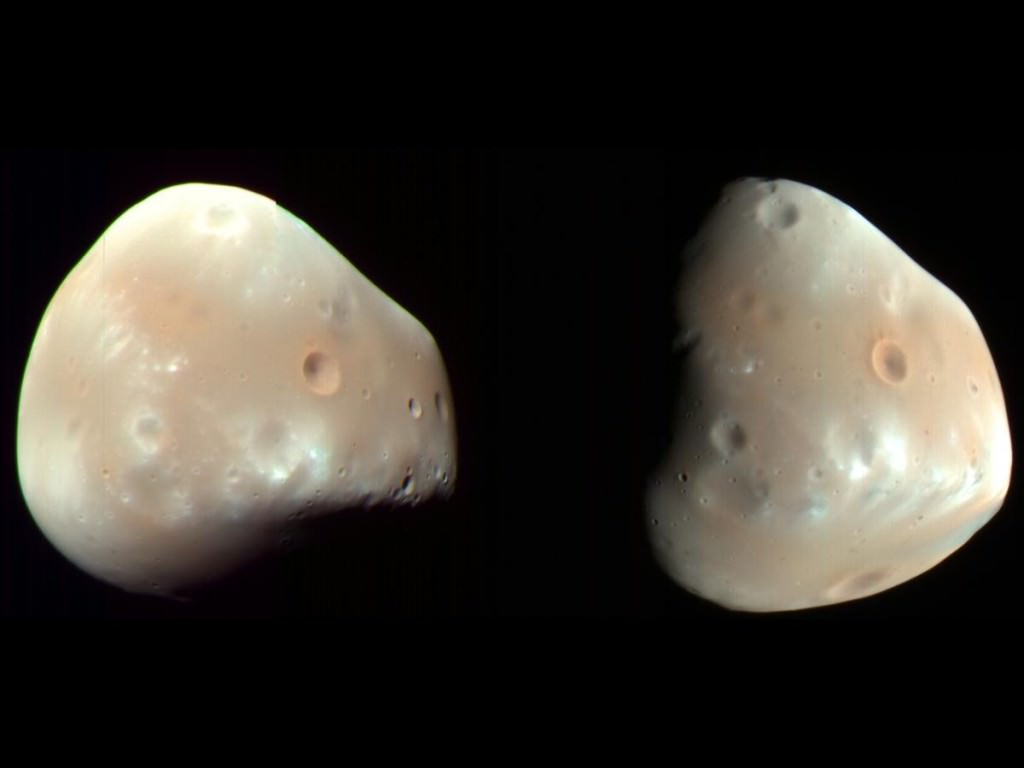Humans to Mars. That’s the plan right? The problem is that sending humans down to the surface of Mars is one of the most complicated and ambitious goals that we can attempt. It’s a huge step to go from low Earth orbit, then lunar landings, and then all the way to Mars, a journey of hundreds of millions of kilometers and 2 years at the least.
But there are two places humans can go which are a stepping stone between Earth and Mars. Base camps that would let us gather our resources in relative safety before dropping down into that gravity well.
I’m talking about the moons of Mars: Phobos and Deimos.
All the focus is on Mars, and with good reason, it’s pretty much the only place that kind of resembles Earth in the Solar System. It has about the same length of day, polar caps of carbon dioxide and water ice, and daytime temperatures that can be almost reasonable.
But we’ve also seen that Mars eats spacecraft for breakfast. Of the 18 spacecraft given the task of landing on the surface of Mars, only 9 have actually made it down safely and were actually able to carry out their mission.

That’s 50%. Are we willing to risk the lives of half the people we send to the Red Planet?
Not to mention the increased challenge of landing heavier payloads on Mars, filled with soft and squishy humans. I’ve done a whole video about why this is so difficult. Check it out here.
But Mars’ two moons, Phobos and Deimos offer an interesting alternative. Instead of going directly from Earth to the surface of Mars, humanity could set up a station on these rocky moons, a base camp, for a serious and safer attempt on Mars.

Phobos is the larger of Mars’ moons, and is 27 kilometers on its longest dimension. It’s similar in composition to a C-type, or carbonaceous chondrite asteroid. Planetary scientists think it was either a captured asteroid, or the debris from an ancient impact a long time ago. It’s covered in fine powder made from eons of micrometeorite impacts, and has absolutely no atmosphere.
The moon orbits above Mars at an altitude of 5,989 kilometers and takes only 7 hours and 39 minutes to complete an orbit around the planet.

Deimos is smaller, just 15 kilometers across at its longest part, and orbits Mars every 30 hours at a much higher altitude of 23,460 kilometers.
So what would it take to set up a base on these moons, and why is it any better than just going directly to Mars.
Even though it’s less massive than the Earth, Mars still has a significant gravity well. In order to go from the surface of Mars to low orbit, you need a velocity change of 3.6 km/s. And if you want to go from Mars back to Earth, you need a velocity change of 6 km/s.

In 2015, three engineers from NASA JPL proposed “A Minimal Architecture for Humans Missions to Mars”, proposing a series of missions which establish a beachhead on one of Mars’ moons first, before sending humans down to the planet.
They suggested that a campaign to send humans to Mars would be broken up into four major stages. First, missions would be sent to Phobos to set up infrastructure on the Moon. Next, astronauts would go down to the surface for a one-month stay. Then a longer one-year expedition would be carried out. And finally, there would be the move to a permanent presence on Mars.

Setting up a presence on Phobos would require four launches of the Space Launch System Block 2, but SpaceX Starships would work nicely too. The first three rockets would carry supplies, a Phobos habitat, and a return vehicle for astronauts to come home. The fourth launch would take an Orion capsule with 4 astronauts to Mars, following a 200 to 225-day trajectory to bring them to Phobos.
The astronauts would live on the Phobos station for about 500 days, performing science on Phobos. Then they’d come home, maybe even making a side visit over to Deimos on the way back, taking another 250 days to return.
Based on the lessons learned from the Phobos mission, the actual landing on Mars would take another six SLS launches. There’d be more supplies and a 75-tonne Mars landing vehicle which would wait in a high Mars orbit.

Finally, a crew would launch, make the journey to the Phobos station and then prepare for a landing on Mars. When the conditions were right, two crew would transfer to the descent vehicle, and land on Mars, spending about a month down on the surface while the other two astronauts would remain on Phobos.
The first human being would set foot on the surface of Mars, some time in the 2030s or 2040s.
At the end of their month, they’d climb into their ascent vehicle, return to Phobos and then all the astronauts would come home again.

With everything tested and proven, more rockets would launch to Mars, carrying more supplies for the Phobos station and a growing Mars base, and astronauts would carry out year long expeditions on Mars.
And eventually, there’d be a permanent presence on Mars, with overlapping crews at Phobos, at the growing Mars base, and in transit.
I know the joke you’re going to make, that SpaceX will be sending Starships a decade earlier and this whole process is irrelevant. Hah hah, stupid NASA.

Maybe, but Mars is completely hostile to human life, there’s absolutely no infrastructure there today, and nobody has fully thought through the thousands of details it’ll take for humans to survive there permanently.
It’s hundreds of days away with our fastest rockets, and anyone who does go to Mars will be beyond any kind of rescue if anything goes wrong.
And when it comes to Mars, you need to assume that things are going to go wrong.
Anyway, if Starship does fly, then NASA just becomes a customer, and gets to do these missions cheaper, faster, with more redundancy and safety.
Remember that NASA is SpaceX’s biggest customer.

It turns out that Phobos might actually make the perfect spot for a partial space elevator. In a 2003 paper entitled “Space Colonization Using Space-Elevators from Phobos”, NASA engineer Leonard Weinstein looked into the feasibility of this idea.
A tether could be lowered down from Phobos, ending just above the atmosphere of Mars. From the surface of Mars, the end tether would be moving through the sky at a velocity of only half a kilometer a second, passing over a spot on Mars twice a day.
Payloads could be launched from the surface of Mars and get captured by the bottom end of the tether, and then carried up to Phobos over about two days. A second elevator could even carry material up to the orbit of Deimos.
And I know this sounds kind of extreme, but when you think about orbital mechanics, it actually takes less energy to carry material from Phobos to lunar orbit than it does to get it from the surface of the Moon.

In a 2013 presentation, Lockheed Martin Engineer Josh Hopkins proposed that Phobos and Deimos make sense as the first place for exploration by humans, and made the case that Deimos is even better.
Both Phobos and Deimos are tidally locked to Mars, which means that they always show the same face to the surface of the planet. Astronauts stationed on one of these moons would be able to teleoperate rovers and sample return missions with essentially no delay.
From its higher altitude, Deimos actually sees more of the surface of Mars than Phobos, 98% of the planet is visible from the moon. With its slower path across the sky, Deimos would have the ability to communicate with the surface for almost 60 hours continuously, while Phobos slips over the horizon every 4.2 hours.
Regions near the north pole of Deimos would be in constant sunlight and also have a constant view down to the surface of Mars.
Getting to and from Deimos would actually be easier, needing about 400 meters/per second less change in velocity.
So, imagine everything I said for a mission to Phobos, but replace that with Deimos instead.
But if we really want to stay, we’ll want to tunnel down inside Deimos. This is according to Jim Logan, the co-founder of the Space Enterprise Institute. During a recent presentation at a conference in Seattle about space settlement, Logan suggested that it should be possible to build a permanent habitat inside Deimos.

I wasn’t there for the seminar, but Alan Boyle from Geekwire was, and he captured this cool photo of Logan’s talk. According to Logan, the original idea for an O’Neill Cylinder underestimated just how much radiation shielding would be necessary by about a third. So remember when I said it they’d need 45,000 Starship launches to build an O’Neill Cylinder, it turns out we might require 150,000 instead.
But it should be possible to dig a tunnel right through the center of Deimos, from end to end, maybe call on Elon Musk’s Boring Company to do the work. The interior of Deimos is assumed to be porous, and engineers would find reserves of water ice, precious metals and minerals as they dug through, which would support pretty much any scale of base.
It could even be large enough to put rotating habitats inside the moon to provide artificial gravity for the inhabitants. Position solar panels at the poles where they’d get almost eternal sunlight
All this focus on Mars, but there’s a case to be made for the moons of Mars, Phobos and Deimos to serve as the first places we visit in the region. Then, when we’ve got a good solid base camp, we make a serious attempt on the Red Planet.


Assuming an approximately 1000 km tether extending upwards from Phobos and a 3000 km tether dangling from Deimos the two moon elevators could share a Zero Relative Velocity Transfer Orbit (ZRVTO)
The moons could exchange passengers and cargo with virtually zero propellent.